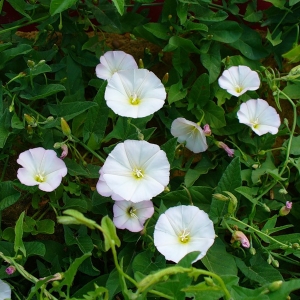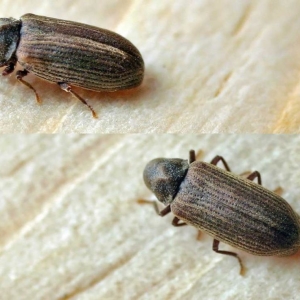Nematodes are small worms that parasitize on the plants that cause its degradation, improper development and further death. These quiet and dangerous pests can cause significant harm to all plantings in the summer cottage and slowly destroy indoor plants. Let's figure out what signs of damage to the plant with nematodes exist and what methods of combating this parasite are.
There are a huge number of types of nematods that are characterized by their taste preferences regarding plants. The similarity of the worms lies in their negative effects on planting: they all parasitize on a certain part of the plant (roots, stems, leaves), feed on its internal fabrics, deplete it and take it necessary for its full development of the substance. There are several main indicators by which you can assume infection of the plant with nematodes:- The root system of the plant is thickened and poorly developed, there are no root hairs on it. On the roots, one can consider cysts of the parasite (they are white or yellowish grains of sand located on threaded roots).
- The plant lags behind in development, has a depressed appearance, the leaves lose their shape and turn yellow.

- Never take the soil repeatedly in which the plant had previously been planted. Pass all the soil with heat treatment (pumping in the furnace).
- When working with indoor plants, wash your arms thoroughly, especially if you worked in the kitchen with vegetables before that.
- Do not use used flower pots, as this container could well be used under an infected or long -dead plant. Boil all pallets and pots.
- Place the recently purchased plant or stalk for a while on the “quarantine”, this will protect indoor flowers from possible infection.
- Never preserve sick plants and do not try to reanimate them, the right solution will be their complete disposal.
- All plants in contact with the patient are thrown away (the same must be done with soil and drainage).
- Perform each transplant or planting on an individually designated surface.
- Hold the correct watering, as a favorable factor for the rapid development of the parasite is high humidity.

When working on your summer cottage, observe such preventive measures:
- Before planting the tubers or plant roots, withstand in a weak solution of potassium permanganate and treat with drugs to increase their immunity (“phytosporin”).
- Carry out a prerequisite seal into the soil of manure, compost, wood ash and humus. During the period of autumn digging, add superphosphates, plant siderates (rye, oats, mustard). Such measures will increase the endurance of plants, activate the propagation processes of nematodes (rainworms and mushrooms), will inhibit the reproduction of microbes that are sources of various diseases.
- Follow the crop rotation of cultures, especially in those places where strawberries, strawberries, potatoes, tomatoes and beets were planted.
- Carry out thermal treatment of plant roots. A short-term effect on hot water roots (50-55 ° C) can completely destroy the living nematode, but not its cysts or eggs.
It is impossible to identify the naked eye. You can cope with it only carefully observing the plants, properly caring and conducting preventive measures. If you suspect infection, act quickly and decisively. Remember that the nematode kills the plant gradually, ruthlessly striking it and slowly bringing it to death.

































